Are you searching for birds with orange beaks? Check out this comprehensive list of 18 amazing birds with orange beaks from around the world. You will find everything from gulls and pelicans to puffins and toucans. Let’s dive in!
1. Common Blackbird
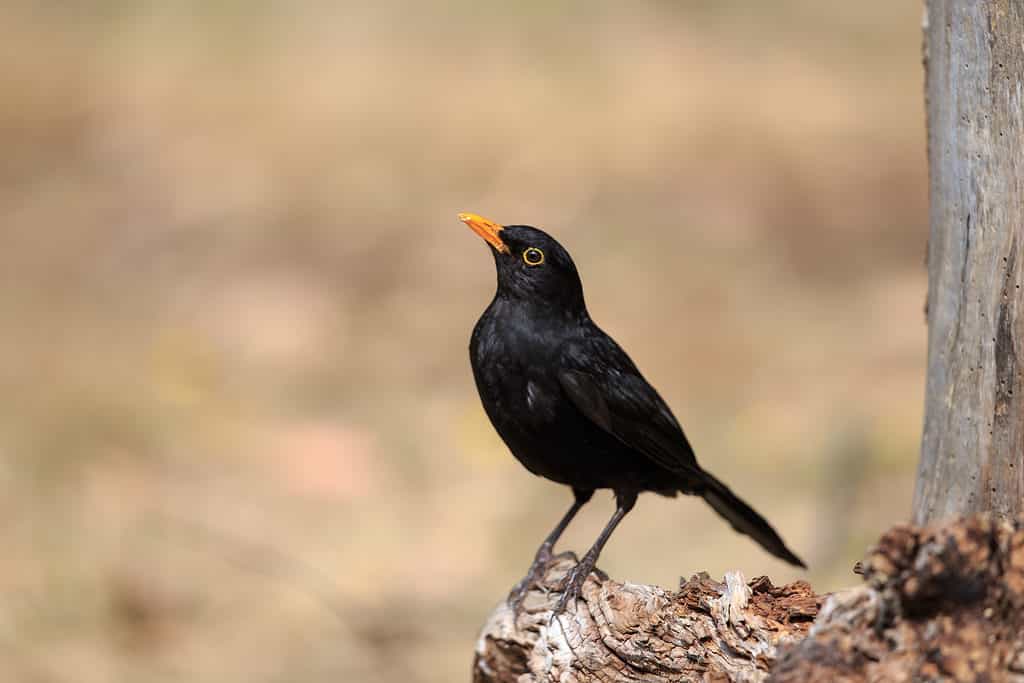
Common blackbirds are one of the amazing birds with orange beaks.
©Edwin Godinho/Shutterstock.com
The common blackbird is a true finch that breeds in Europe, North Africa, and Asiatic Russia. This bird features glossy black plumage, brown legs, yellow eye rings, and orange bills. You can find this species in woodlands, preferably deciduous trees with dense undergrowth. Common blackbirds have also been introduced to Australia and New Zealand.
2. Grey-Headed Gull
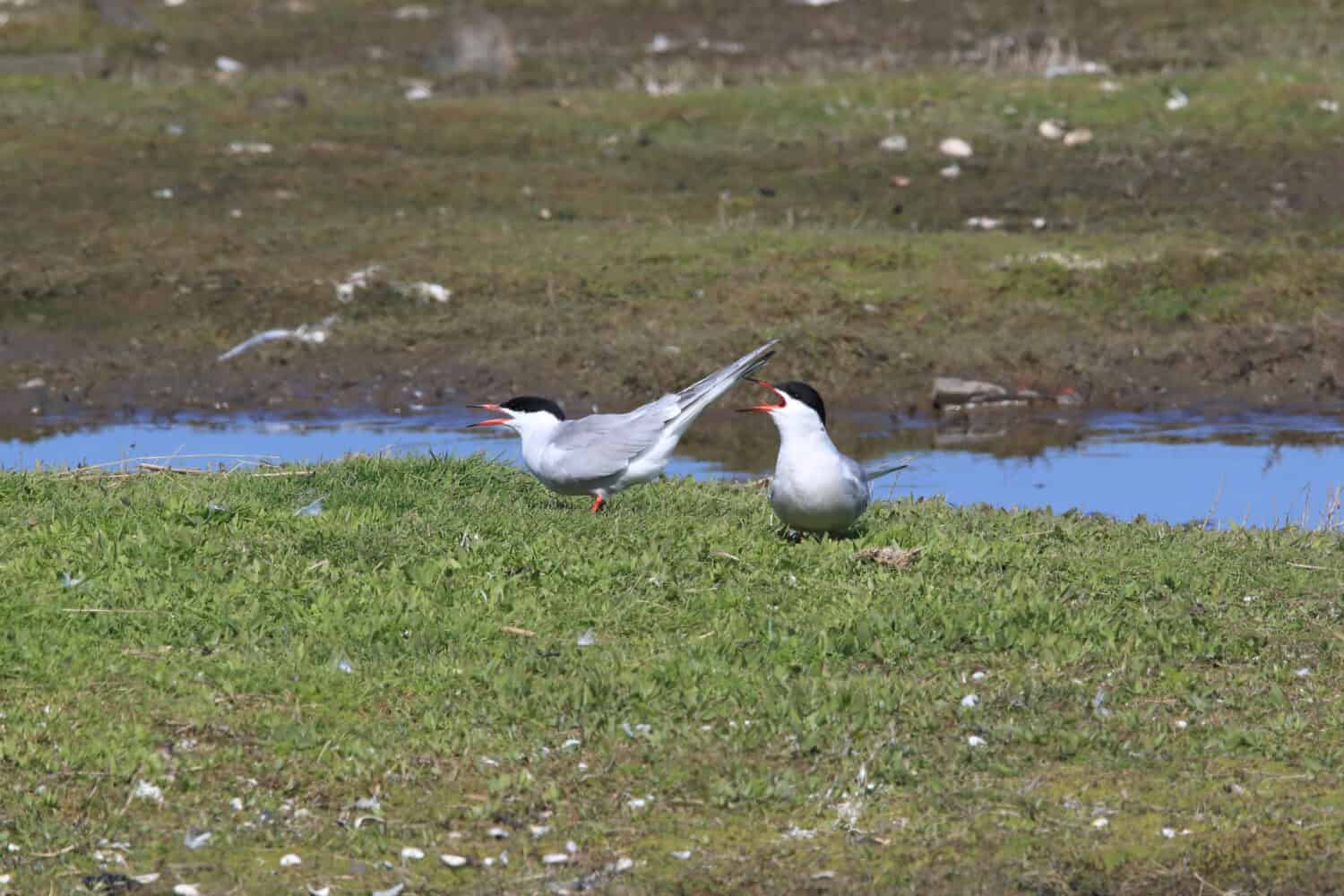
Gray-headed gulls live in large colonies in marshes.
©Greens and Blues/Shutterstock.com
This small gull is distinguishable from other gulls by its gray hood. Grey-headed gulls breed in South America and south of the Sahara in Africa. And it has also been a rare vagrant in North America and Europe. They live in large colonies in marshes and reedbeds during the breeding season. And you can see them around the coasts and estuaries.
3. American White Pelican
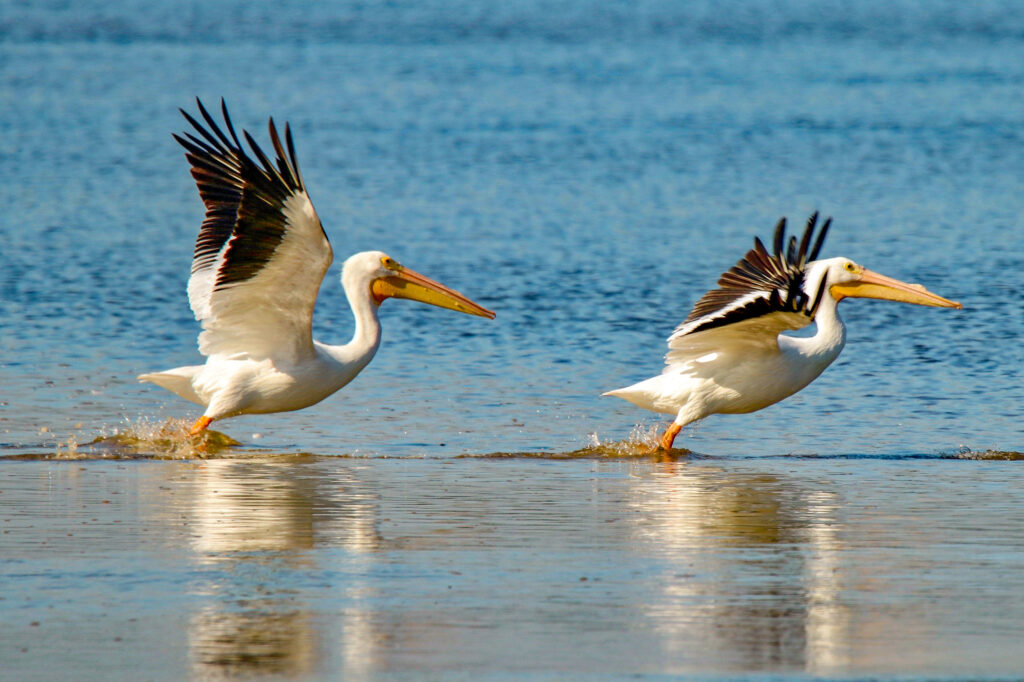
Pelican
parents often fish for their young and bring food back to the nest.
©Susan Rydberg/Shutterstock.com
The American white pelican is one of the largest birds in North America, featuring huge bills and large heads. Their bodies are white and black, and their beaks are bright orange to yellowish orange. These birds breed in Canada and the Northern United States and winter in the Southern United States and Mexico.
4. Toco Toucan

The beak of a toucan aids in keeping the bird cool.
©iStock.com/Musat
Also known as the giant toucan, these big tropical birds live in Central and Eastern South America. Their plumage is black, white, and red, but their most notable feature is their massive orange-red beaks, which are the largest (relative to body size) of any bird. Additionally, these beaks help keep the bird cool. These birds like semi-open habitats, such as woodlands, plantations, forest edges, and savannas.
5. Australian Zebra Finch

Australian zebra finches are common in Central Australia.
©CC BY-SA 4.0 – License
The Australian zebra finch is a common estrildid finch in Central Australia. However, it can be found throughout most of the continent, except tropical areas in the northern regions and cool, humid areas in the south. They like dry habitats, such as grasslands and open woodlands. These multicolored birds feature buff, gray, chestnut, and black plumage. And they have bright orange beaks.
6. Atlantic Puffin
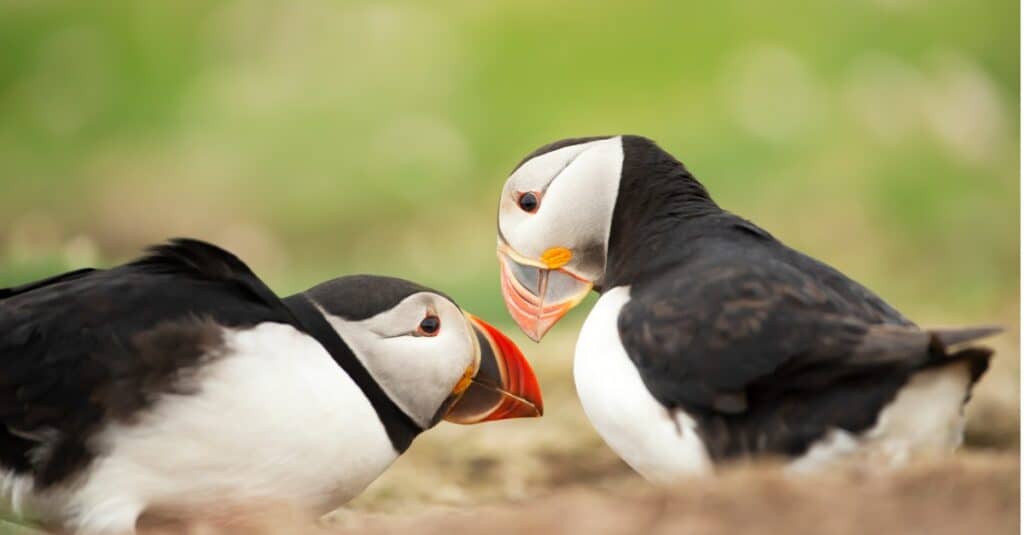
Atlantic puffin mates strengthen their bond by billing or rattling their beaks together.
©Giedriius/Shutterstock.com
These black and white seabirds feature orange, gray, and white beaks. They live in the North Atlantic in North American waters, where they breed on islands. While Atlantic puffins look similar to penguins, these birds can fly and swim, using their powerful little flippers to stay aloft or glide through frigid water. The islands off of Maine are the best places to see them in the United States.
7. Northern Cardinal
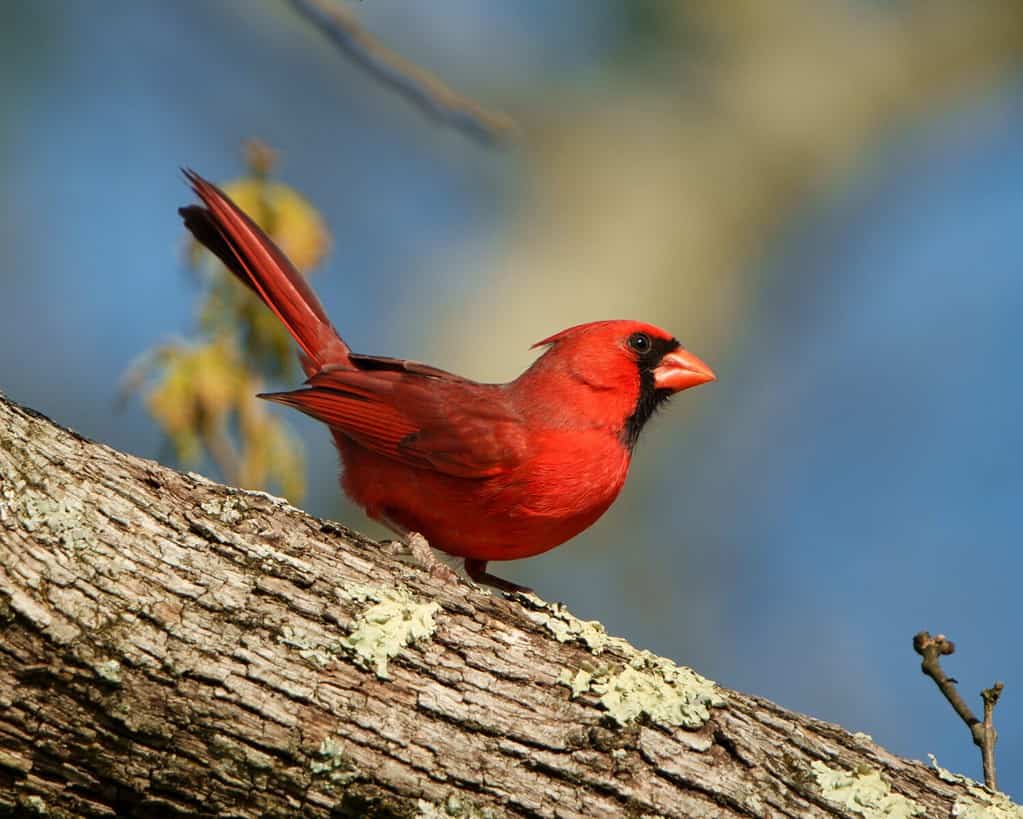
The northern cardinal features bright red plumage and an orange beak.
©peter weiler/Shutterstock.com
Northern Cardinals are brightly colored birds of North America, featuring vibrant red plumage and orange-red beaks. Females are brown with red accents and also feature bright red-orange beaks. You can find them year-round throughout the Eastern United States and Mexico. And they like to live near forest edges, overgrown fields, thickets, and backyards. The northern cardinal is a popular bird at feeders.
8. Variable Oystercatcher
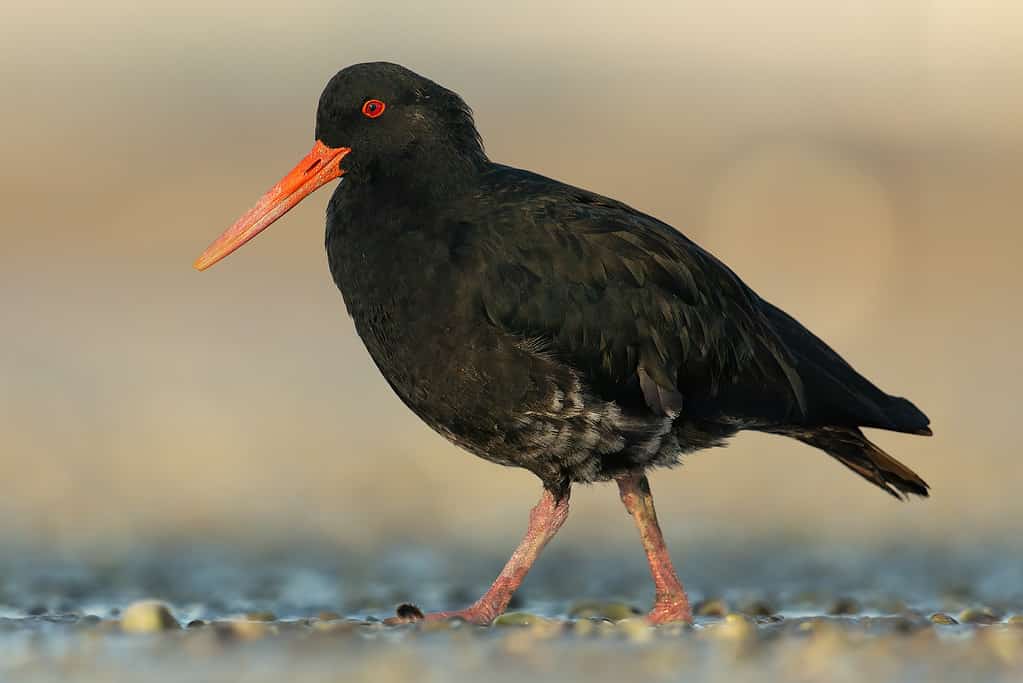
Variable oystercatchers are black wading birds with orange beaks.
©CC BY-SA 4.0 – License
The variable oystercatcher is a wading bird with variable plumage, ranging from mottled to black. This bird is endemic to New Zealand and features a bright reddish-orange beak and feet. They don’t stray from their island range due to their lack of migration. And they live in many coastal habitats, preferring sandy beaches and estuaries. And they like to nest on sand dunes, making scrapes in the sand and lining them with seaweed.
9. Malachite Kingfisher
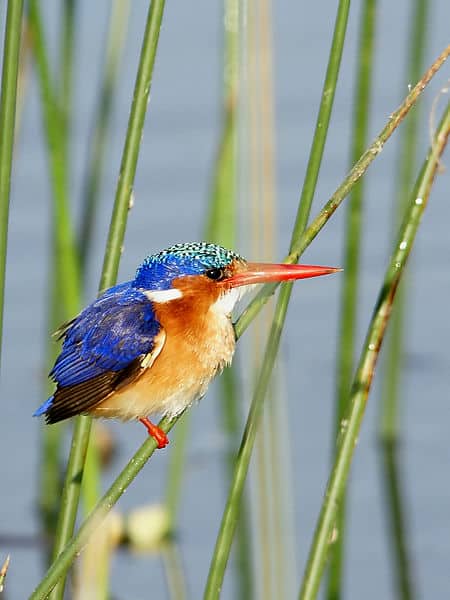
Malachite Kingfishers are beautiful little birds.
©© Hans Hillewaert / CC BY-SA 4.0 – License
This river kingfisher has copper, blue, and green plumage with bright red-orange beaks. They are relatively small, only about five inches long and they live throughout Sub-Saharan Africa. They typically stay in their range year-round, except for short movements relating to climate. And they are aquatic birds that live near slow-moving water with aquatic vegetation.
10. Royal Tern
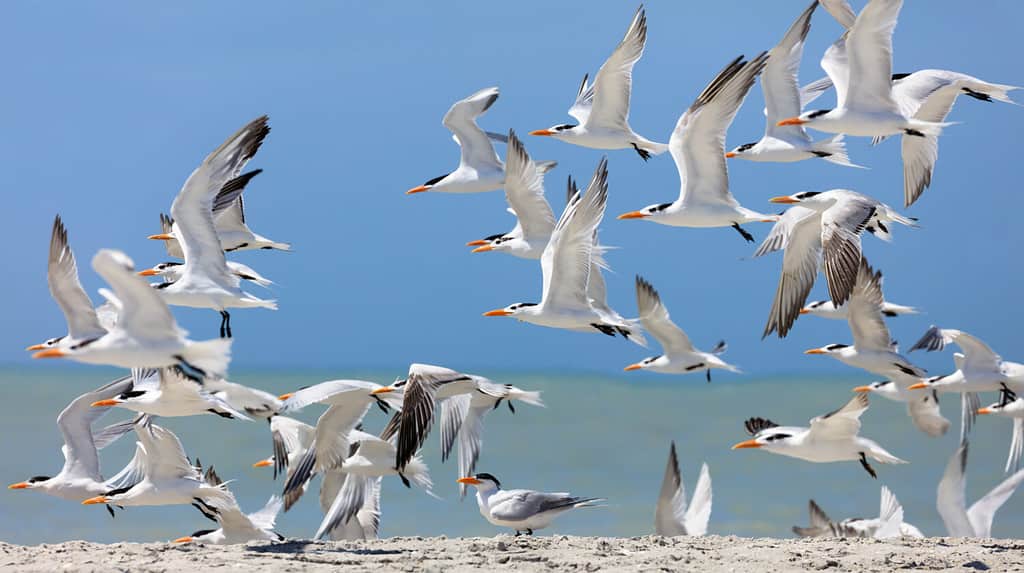
Royal terns are sleek seabirds.
©ulrich missbach/Shutterstock.com
These sleek seabirds have white and black plumage with shaggy crests and yellow-orange beaks. Royal terns live around most of the coasts in the United States, Mexico, and parts of Central America. They also inhabit much of the West Indies. You will find them flying along coastlines, diving in the sparkling ocean, and nesting in dense colonies.
11. Mute Swan

Mute swans can be very aggressive in defense of their nests and are highly protective of their offspring.
©Arte foto/Shutterstock.com
Elegant mute swans are large bright white waterfowl with red-orange beaks. They are native to the Palearctic region, such as Europe, Siberia, and North Africa. But they are also an introduced species in North America, Australasia, and Southern Africa. You will often find them in parks on ponds and lakes. Mute swans are less vocal than their relatives, hence the name.
12. Oriental Dwarf Kingfisher

Oriental dwarf kingfishers are about the size of a
hummingbird
.
©iStock.com/thipwan
The oriental dwarf kingfisher is a tiny bird about the size of a hummingbird. And it features bright and multicolored plumage, from lilac and indigo to pink and orange. Its beak and feet are also orange. They are tropical birds of India and Southeast Asia, where they reside in lowland forests near ponds and streams.
13. Violet Turaco
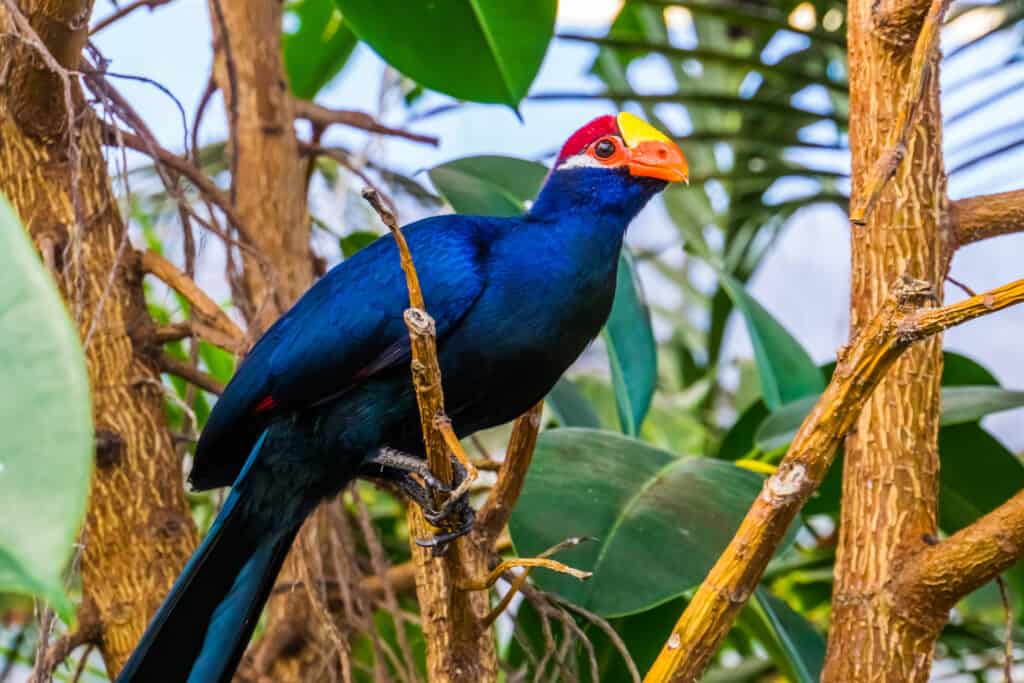
The violet turaco is a shy bird.
©Charlotte Bleijenberg/Shutterstock.com
Also known as the violaceous plantain eater, the violet turaco is a shy and brightly colored bird. This large turaco features violet plumage with red crowns, yellow foreheads, and red-orange beaks. Their wings also feature red feathers, which you can see when they are in flight. These birds live in West Africa, where they inhabit tropical savannas, forests, woodlands, and wetlands.
14. American Goldfinch

The American goldfinch averages around 5 inches in length.
©iStock.com/impr2003
The American goldfinch is a small finch from North America. This migratory species features bright yellow plumage with black streaking and orange-yellow beaks. They breed in Canada, live year-round in the Northern United States, and winter in the Southern United States and Mexico. And they inhabit open country, like fields, meadows, orchards, and gardens.
15. Black Oystercatcher
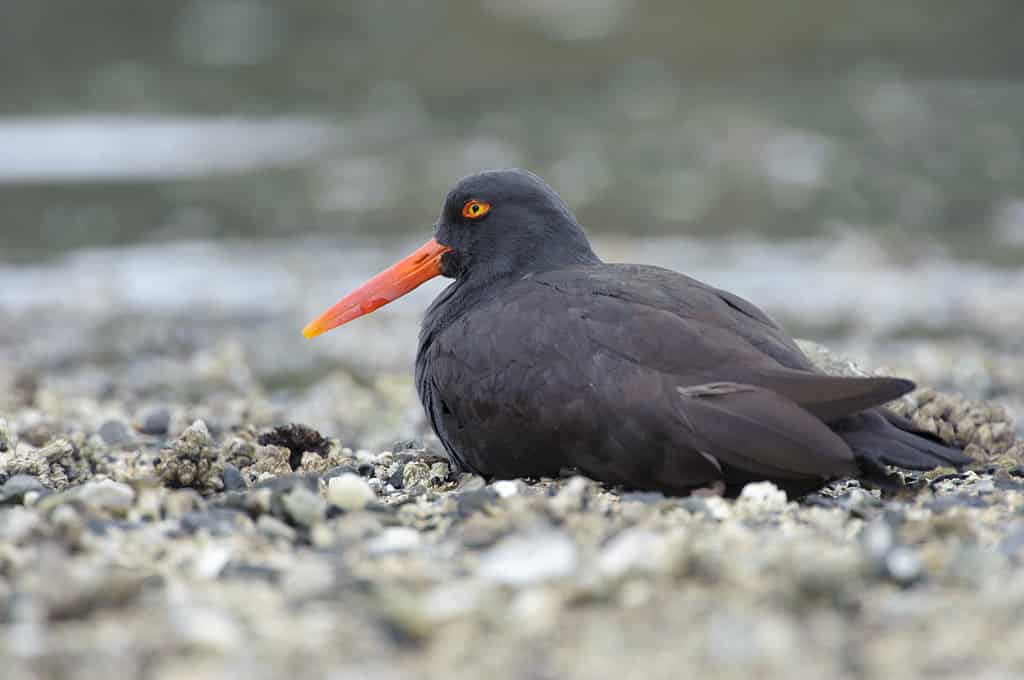
Black oystercatchers live along the shoreline in Western North America.
©Wildpix 645/Shutterstock.com
These large, dark shorebirds feature black heads, brown bodies, pink legs, and red-orange bills. Black oystercatchers live along the shoreline of Western North America, from Alaska to the Baja California Peninsula. They like rocky shorelines, where they can be found in the intertidal zones or waiting nearby for the tide to reverse during high tide.
16. African Skimmer
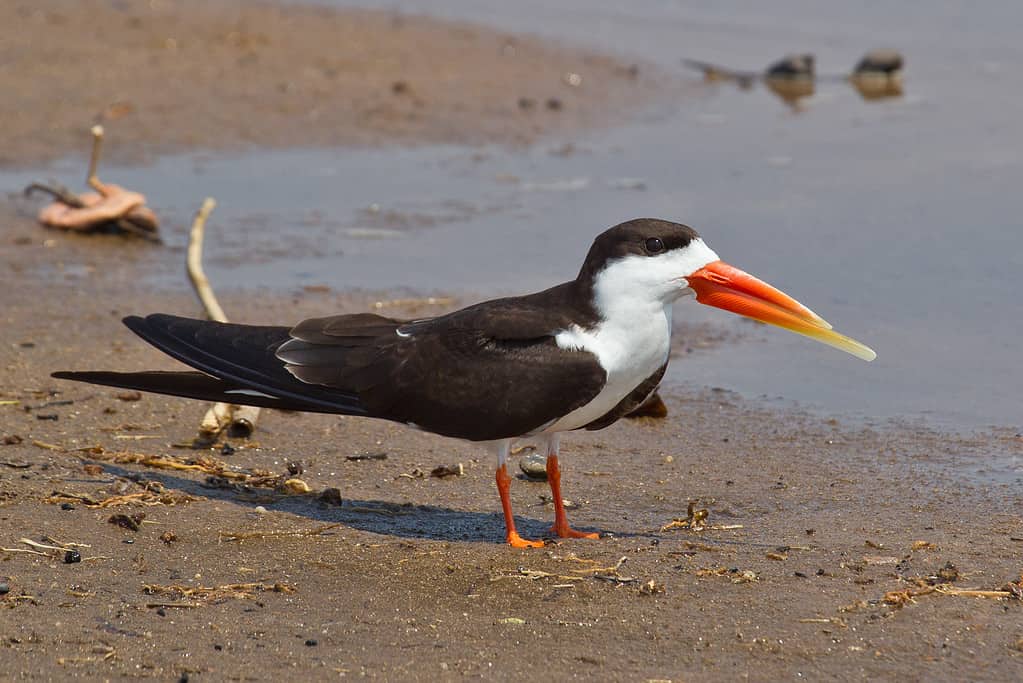
The African skimmer lives in tropical areas on the sandbanks of large rivers.
©CC BY 2.0 – License
African skimmers are tern-like birds with long wings, black and white plumage, and long, orange beaks. They also have bright red legs and short, forked tails. You can find this species in Sub-Saharan Africa, from Senegal to South Africa. They live in tropical areas on the sandbanks of large rivers, lake shores, and coastal lagoons. And they like to fly low over the water, skimming their lower mandibles under the surface.
17. American Oystercatcher
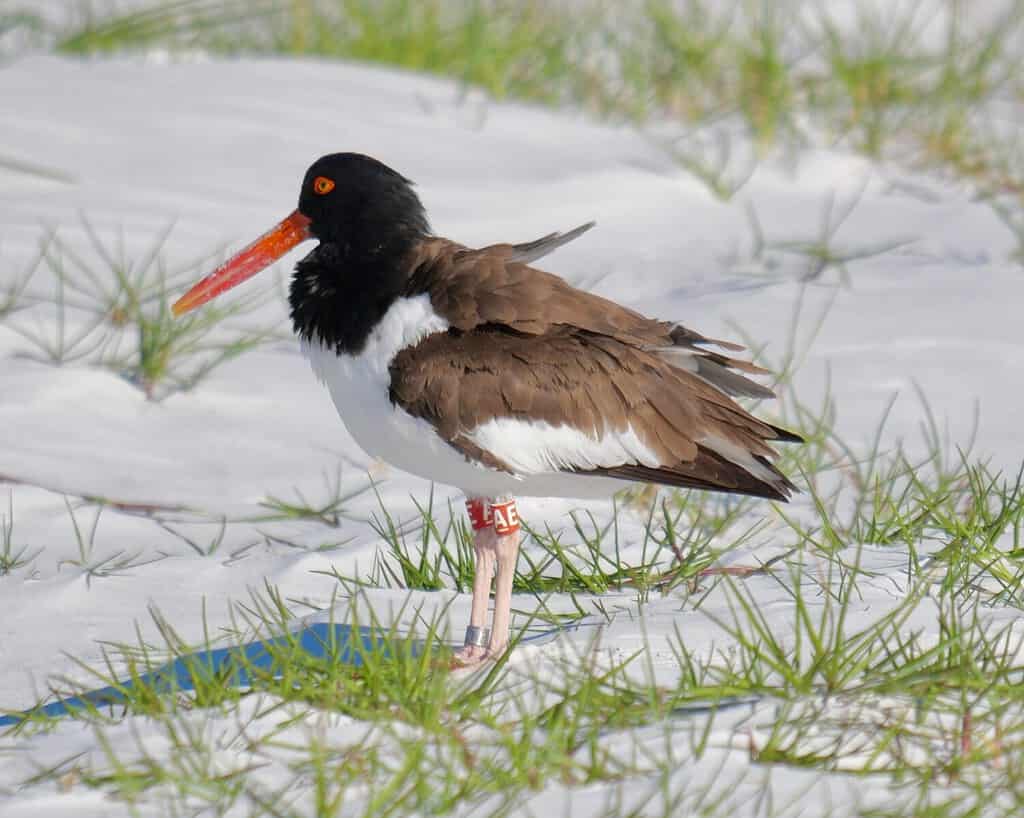
American oystercatchers live near beaches, islands, and salt marshes.
©Archaeopteryx Tours/Shutterstock.com
The American oystercatcher is a shorebird of the Americas. This species features black and white plumage and long, orange beaks. You can find them around South America and United States coasts, where they live near beaches, salt marshes, mudflats, and islands. During the breeding season, you can find them on coastal islands in mud or salt flats.
18. Greylag Goose
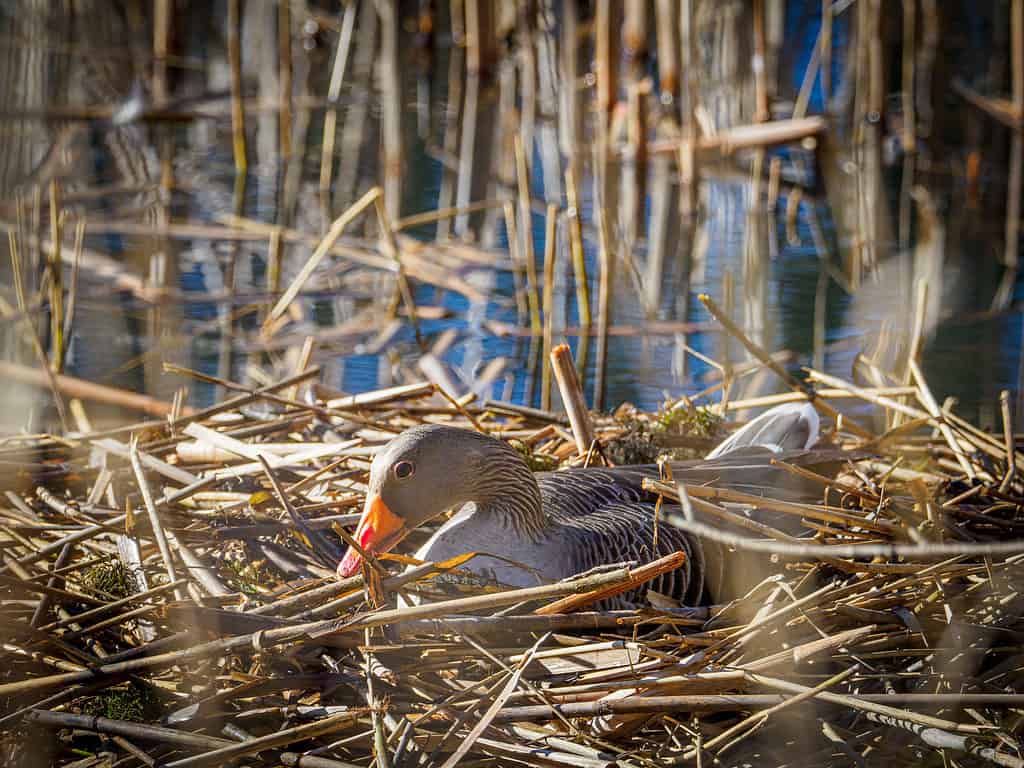
Greylag geese generally nest near the water’s edge.
©karegg/Shutterstock.com
This large goose belongs to the waterfowl family and features mottled gray plumage, pink legs, and orange beaks. They are widespread in Europe and Asia, where they nest on moorlands, coastal islands, and marshes. And during the winter, you can find them in similar habitats in warmer areas.
Amazing Birds with Orange Beaks from Around the World: A Recap of the Top 18
| Rank | Birds With Orange Beaks | Location |
|---|---|---|
| #1 | Common Blackbird | Europe, North Africa, Asiatic Russia |
| #2 | Grey-headed Gull | South America and Africa |
| #3 | American White Pelican | North America |
| #4 | Toco Toucan | South America |
| #5 | Australian Zebra Finch | Australia |
| #6 | Atlantic Puffin | North America |
| #7 | Northern Cardinal | North America |
| #8 | Variable Oystercatcher | New Zealand |
| #9 | Malachite Kingfisher | Africa |
| #10 | Royal Tern | North America |
| #11 | Mute Swan | Europe, Siberia, North Africa, North America |
| #12 | Oriental Dwarf Kingfisher | Asia |
| #13 | Violet Turaco | Africa |
| #14 | American Goldfinch | North America |
| #15 | Black Oystercatcher | North America |
| #16 | African Skimmer | Africa |
| #17 | American Oystercatcher | North America, South America |
| #18 | Greylag Goose | Europe, Asia |
The photo featured at the top of this post is © CC BY-SA 4.0 – License / Original
Thank you for reading! Have some feedback for us? Contact the AZ Animals editorial team.






